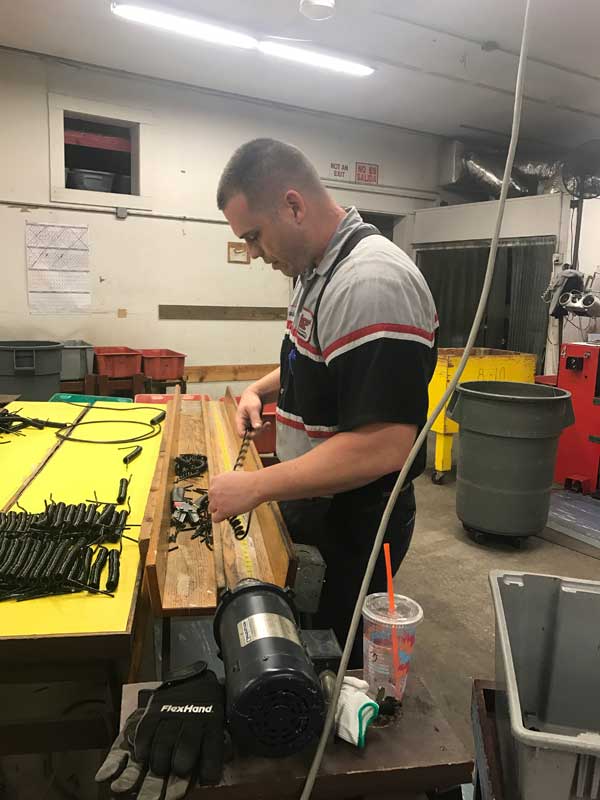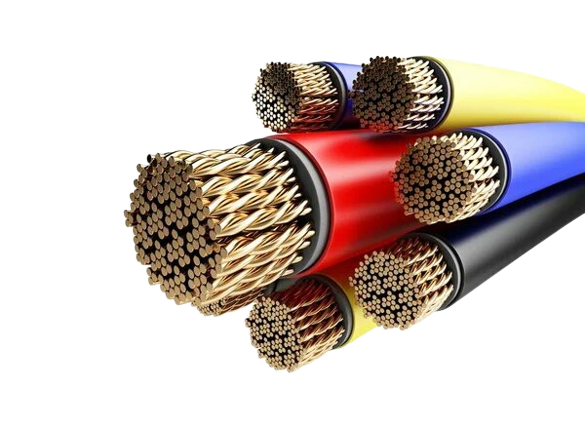Have you ever found yourself tangled up in a phone cord while trying to multitask during a call? Or maybe you’ve experienced the frustration of a cord. That is too short, forcing you to hunch over your desk or stand in an awkward position just to stay connected. Entering the curly cord – a solution that has been around for decades but is still widely used today.
In this article, we’ll explore the different types of curly cords for phones. Their pros and cons, and how to choose the right one for your needs. We’ll also take a look at the history of curly cords and provide tips on how to use them effectively. So sit back, relax, and let’s dive into the world of curly cords.
How to Use a Curly Cord?
Using a curly cord, also known as a coiled curly cord for your phone, is simple. First, plug one end of the cord into the handset of your phone and the other end into the base unit or wall jack. Once connected, you can stretch out the cord to your desired length and comfortably hold the handset while talking on the phone.

One thing to keep in mind when using a curly cord is to avoid twisting or knotting it. Doing so can damage the cord and affect its performance over time. Additionally, be sure to store the cord properly when not in use by loosely coiling it up and avoiding any sharp bends or kinks.
Overall, using a curly cord for your phone is an easy way to add some flexibility and convenience to your daily communication needs. With proper care and usage, you can enjoy all the benefits that these cords have to offer for years to come.
How are curly cord phones manufactured?
When it comes to manufacturing curly cords for phones, there are a few key steps involved in the process. First, the raw materials must be sourced and prepared. This typically involves obtaining high-quality copper wire that will be used to create the cord itself. The wire is then coated with a protective layer to ensure durability.

Next, the wire is wound into a spiral shape using specialized machinery. This process requires precision and attention to detail to create a consistent and uniform cord that will function properly with various types of phones. Once the cord has been created, it may undergo additional testing. The quality control measures to ensure that it meets industry standards for performance and reliability.
Overall, the manufacture of curly cords for phones is a complex process that requires skilled technicians. The advanced equipment produces high-quality products that can withstand daily use over time.
Types of Curly Cords for phones?
When it comes to curly cords for phones, there are several different types available on the market.
The most common type is the coiled cord, which is made of a stretchy material that allows it to expand and contract as needed. Coiled cords are often used in office settings where people need to move around while on the phone.
Another type of curly cord is the retractable cord. This type of cord is similar to a coiled cord, but it has a mechanism that allows it to retract back into itself when not in use. Retractable cords are great for people who want to keep their workspace tidy and free from clutter.
Finally, there are straight cords with curly ends. These cords have a straight section that connects to the phone or headset, and then they curl up at the end. Straight cords with curly ends are often used in home settings where people want a more traditional look for their phone setup.
No matter what type of curly cord you choose, make sure it’s compatible with your phone or headset and meets your specific needs.
The Pros and Cons of Curly Cords
Curly cords for phones have been around for decades and are still popular today. While they do have their advantages, there are also some drawbacks to consider before making a purchase.
One of the biggest pros of curly cords is their flexibility. They can stretch and retract as needed, allowing you to move around while on the phone without getting tangled up in a long cord. This makes them especially useful in office settings where you may need to move from one desk to another or take calls while walking around.
Another advantage of curly cords is that they are generally more durable than straight cords. Because they are designed to stretch and retract repeatedly, they tend to hold up better over time than cords that remain stationary.
However, there are also some cons to consider when it comes to curly cords. One potential issue is that they can become tangled if not properly stored or handled. This can be frustrating and time-consuming to untangle, especially if you’re in a hurry.
Additionally, curly cords may not be suitable for all types of phones or situations. For example, if you frequently use your phone outdoors or in wet conditions, a curly cord may not be the best choice as it could become damaged or corroded over time.
Overall, while curly cords do offer some benefits over straight cords, it’s important to weigh the pros and cons before making a decision on which type of cord is right for you and your phone.
The History of Curly Cords
Curly cords have been around for decades and have played an important role in the evolution of telecommunication technology. The first curly cords were introduced in the 1950s and were used to connect rotary dial phones to the wall. These cords were made of a coiled metal wire covered with plastic insulation, which allowed them to stretch and retract as needed.
As telephone technology advanced, so did the design of curly cords. In the 1970s, curly cords became more flexible and durable, allowing them to withstand repeated stretching and twisting without breaking. This made them ideal for use in corded telephones that were becoming increasingly popular at the time.
Today, curly cords are still widely used in communication devices such as landline phones, cell phones, and headsets. They come in a variety of colors and lengths to suit different needs and preferences. Despite the rise of wireless communication technology, many people still prefer using curly cords due to their reliability and convenience.
How to Choose the Right Curly Cord for Your Phone
When it comes to choosing the right curly cord for your phone, there are a few factors to consider. First and foremost, you need to make sure that the cord is compatible with your phone’s model. Different phones have different types of connectors, so it’s important to check if the cord fits properly before making a purchase.
Another important factor to consider is the length of the cord. If you plan on using your phone while it’s charging, you’ll want a cord that’s long enough to reach your desired location comfortably. On the other hand, if you only need a short cord for occasional use. A shorter one may be more convenient.
Lastly, think about the durability of the cord. Some cords are made with higher quality materials than others and may last longer as a result. Additionally, some cords come with warranties or guarantees which can give you peace of mind in case anything goes wrong.
Consider these factors when choosing a curly cord for your phone. You can ensure that you’re getting one that meets your needs and will last for years to come.
Conclusion
In conclusion, curly cords for phones have been around for decades and continue to be a popular choice for many. They offer a range of benefits such as flexibility, durability, and convenience. However, they also have some drawbacks such as tangling and limited range.
When choosing the right curly cord for your phone, it’s important to consider factors such as length, compatibility, and quality. With proper use and maintenance, a curly cord can provide reliable service for years to come. Whether you’re looking for a replacement or an upgrade, there are plenty of options available on the market today.




Recent Comments